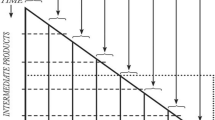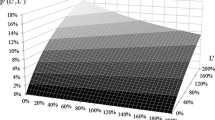Summary
We have shown that preferred stock has a unique role in the financing of public utility capital expenditures, particulary when returns allowed by regulatory commissions are perceived to be inadequate. From the firm's perspective there is no tax advantage for debt because the commission effectively passes the tax savings through the consumers. If allowed returns on common stock are inadequate and the firm has exhausted its perceived debt capacity, then preferred stock becomes the optimal financing instrument. The regulatory commissions compute the costs of debt and preferred stock so that companies can expect returns to cover payments on debt and preferred stock if the assets being financed are necessary and will be included in the rate base. During extremely bad years when revenues are much less than expected, the companies can delay or miss preferred stock dividends without running the risk of default. The data on new capital sources for the electric and gas utilities indicate that these companies made adjustments which are consistent with the implications of our model, but they did not follow the extreme policy of using only debt and preferred stock when market-to-book ratios for common stock were below one. Regulators have, on occasions, used capital structures for rate-making that differ from actual capital structures, and a utility might be penalized for using an extreme capital structure policy. The main emphasis of regulatory review of capital structure, however, has been on the debt component. One strategy would be to use a debt level that satisfies the regulatory commission and then adjust equity between preferred stock and common stock to maximize value for common stockholders.
Similar content being viewed by others
References
Asquith, Paul, and David W. Mullins. 1986. “Equity Issues and Offering Dilution.” Journal of Financial Economics 15 (January–February): 61–89.
Brealey, Richard A., and Stewart C. Myers. 1988. Principles of Corporate Finance. 3rd Edition. New York: McGraw-Hill.
Brigham, Eugene F., Louis C. Gapenski, and Dana A. Aberwald. 1987. “Capital Structure Cost of Capital, and Revenue Requirements.” Public Utilities Fortnightly 119 (January 8): 15–24.
Brooks, LeRoy D. 1984. “Stock-Bond Swaps in Regulated Utilities.” Financial Management 13 (Autumn): 5–10.
Elton, Edwin J., Martin J. Gruber, and Zvi Lieber. 1975. “Valuation, Optimum Investment and Financing for the Firm Subject to Regulation.” Journal of Finance 30 (May): 401–26.
Finnerty, John D. 1984. “Preferred Stock Refunding Analysis: Synthesis and Extension.” Financial Management 13 (Autumn): 22–28.
Fischer, Donald E., and Glenn A. Wilt. 1968. “Non-Convertible Preferred Stock as a Financing Instrument, 1950–1965.” Journal of Finance 23 (September): 611–24.
Gordon, Myron J. 1967. “Some Estimates of the Cost of Capital to the Electric Utility Industry, 1954–57: Comment.” American Economic Review 57 (December):1267–78.
Gordon, Myron J. 1974. The Cost of Capital to a Public Utility. East Lansing: MSU Public Utilities Studies.
Kahn, Alfred E. 1970; 1971. The Economics of Regulation: Principles and Institutions. Volumes I and II. New York: John Wiley & Sons.
Litzenberger, Robert H., and Howard B. Sosin. 1979. “A Comparison of Capital Structure Decisions of Regulated and Non-Regulated Firms.” Financial Management 8 (Autumn): 17–21.
Meyer, R. A. 1976. “Capital Structure and the Behavior of the Regulated Firm Under Uncertainty.” Southern Economic Journal 42 (April): 600–09.
Moyer, R. Charles, M. Wayne Marr, and Robert E. Chatfield. 1987. “Noncovertible Preferred Stock Financing and Financial Distress: A Note.” Journal of Economics and Business 39 (February): 81–89.
Patterson, Cleveland S. 1984. “The Financing Objectives of Large U.S. Electric Utilities.” Financial Management 13 (Summer): 15–23.
Pettway, Richard H., and Robert C. Radcliffe. 1985. “Impacts of New Equity Sales Upon Electric Utility Share Prices.” Financial Management 14 (Spring): 16–25.
Sherman, Roger. 1977. “Financial Aspects of Rate-of-Return Regulation.” Southern Economic Journal 44 (October): 240–48.
Taggart, Robert A. 1981. “Rate-of-Return Regulation and Utility Capital Structure Decisions.” Journal of Finance 36 (May): 383–93.
Weaver, G. K., and Mark S. Gerber. 1986. “Capital Structure Maintenance: A Challenge for Electric Utilities.” Public Utilities Fortnightly 118 (September 4): 20–23.
Author information
Authors and Affiliations
Rights and permissions
About this article
Cite this article
Scott, L.O. A role for preferred stock in the financing decision of a public utility. J Regul Econ 1, 21–33 (1989). https://doi.org/10.1007/BF00150295
Issue Date:
DOI: https://doi.org/10.1007/BF00150295




